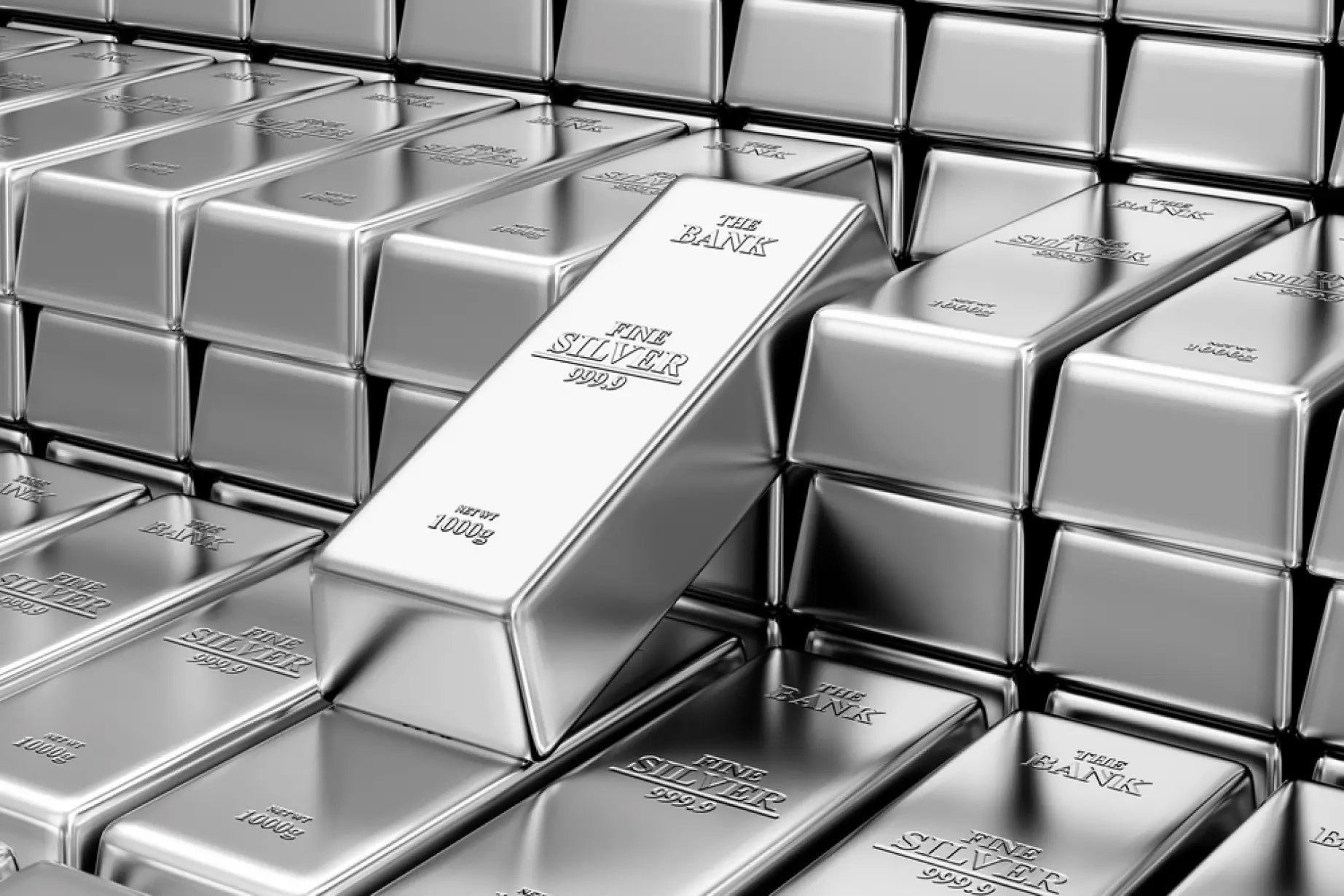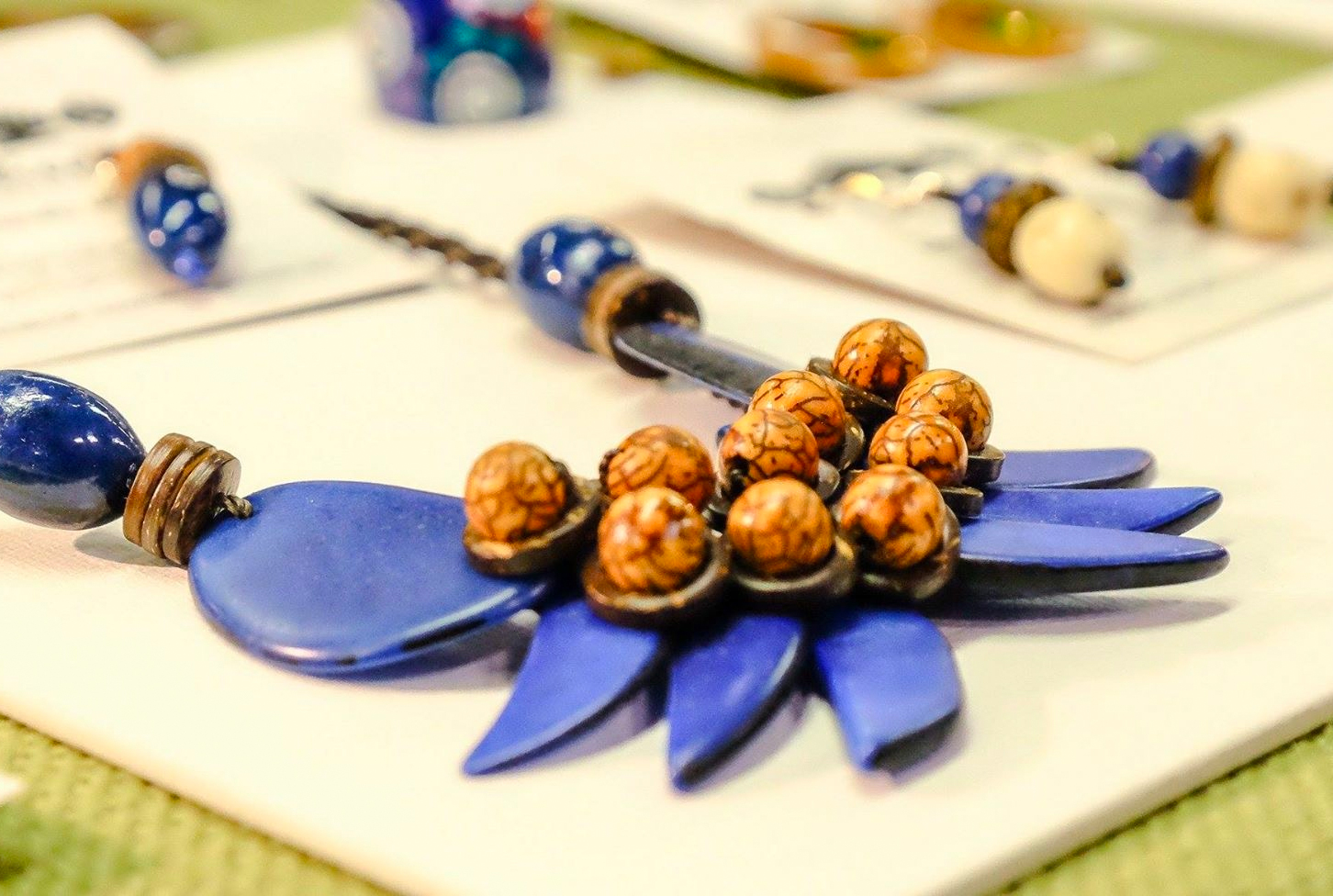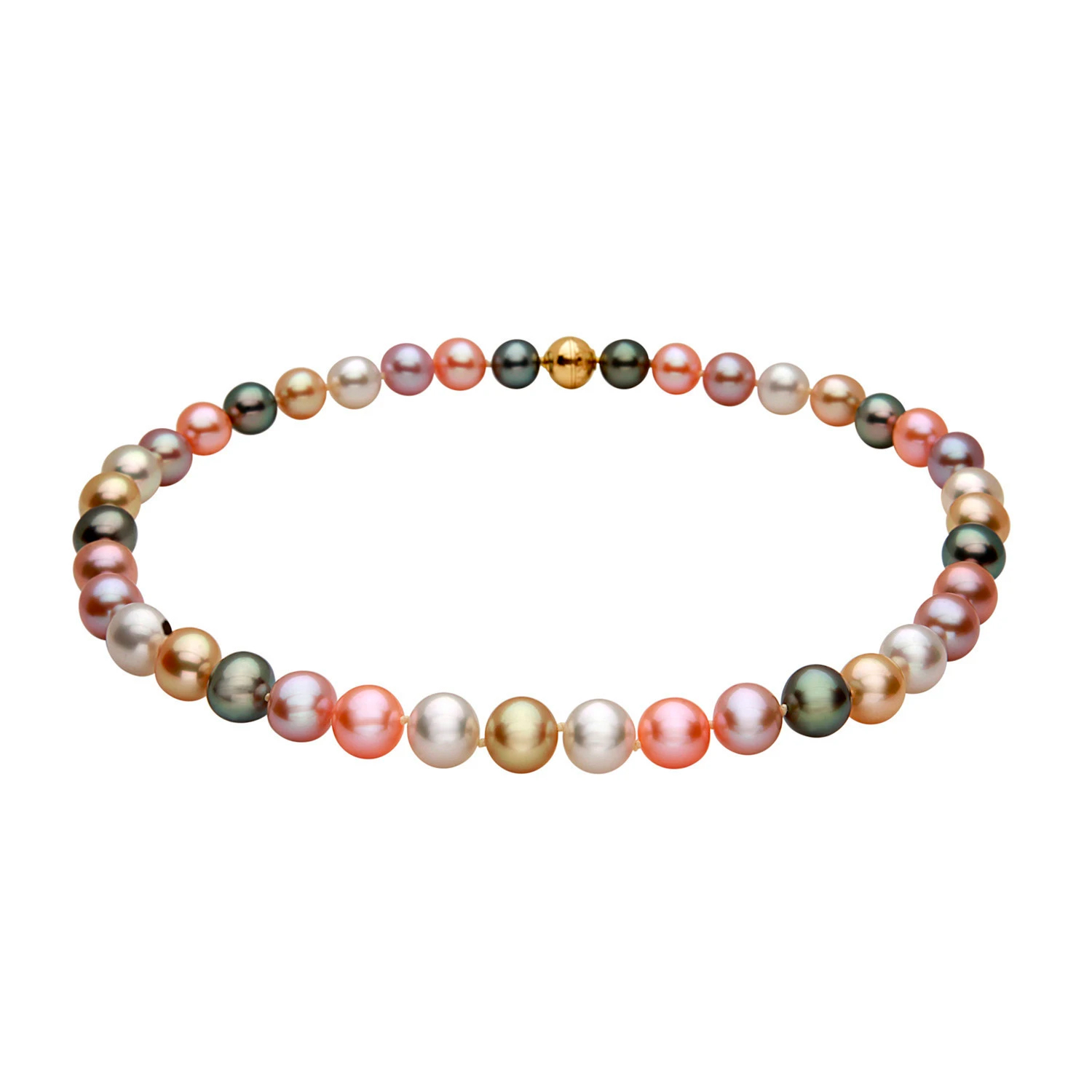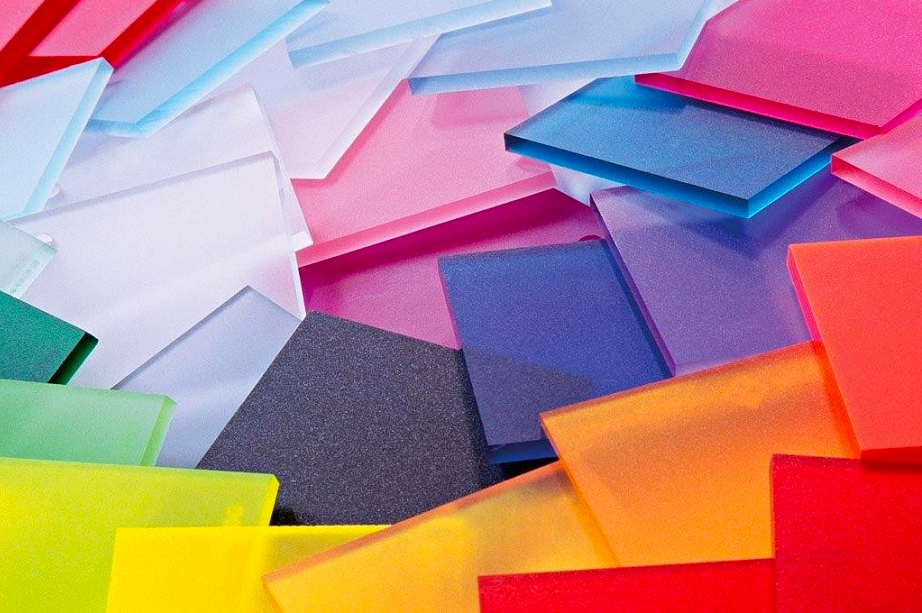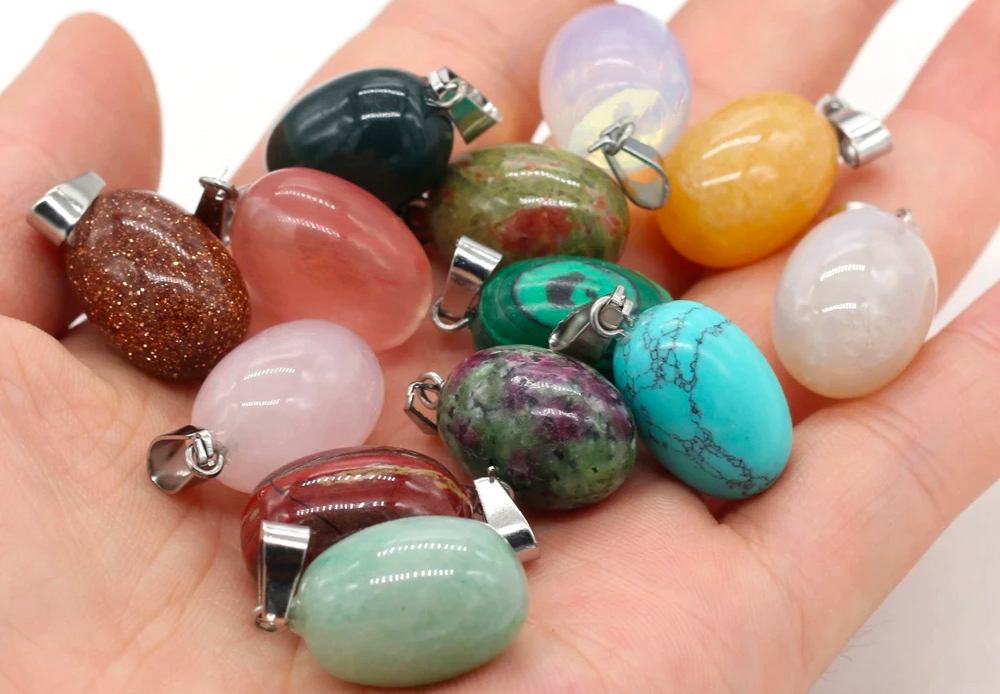Using jewelry to adorn human beauty is as old as human existence itself. This act consistently improved over time with the discoveries of diverse materials useful in making jewelry.
Several materials are used in making jewelry, particularly fashion options.
The best materials to make jewelry are gold and gemstones because they have great value, durability, and visual appeal.
However, they are not the only suitable materials. Others include:
- Silver
- Platinum
- Titanium
- Base Metals
- Shells
- Pearl
- Stones
- Glass
- Acrylic, Resins, and Plastic
- Clay (Porcelain and ceramic)
These materials vary in their value and properties. They also have different characteristics in terms of hardness, brightness, oxidation, etc.
Do you customize jewelry, or are you a lover of adornment? Either way, it is vital to understand the properties of various jewelry m terials.
This guide provides you with a list of standard and not-so-common materials for making jewelry, including their properties, pros, and cons.
Read on to find out!
1. Gold
Gold is among the most precious materials on earth. Aside from the fact that it is a rare metal, it is also valuable.
Gold has always been a beloved material for making jewelry. The recent circulation of gold consists of about 50% of jewelry.
Pure gold usually has a bright reddish color, and its value is rated in Karats (K). Ho ever, the properties of gold make it challenging to use it alone in making jewelry. It is usually used with other materials like silver to make wedding bands, necklaces, and earrings.
In the early days, gold helped produce currencies, making it one of the antiquity metals. A metal of antiquity is any metal humans identified and utilized during the prehistoric era.
Pure gold is about 24 Karats and has a 2.5-3 on the Mohs hardness scale. This relatively soft nature makes it challenging to use gold alone.
Gold is alloyed with other hard metals like nickel, silver, copper, or zinc. Hence, most gold available in jewelry is usually 14k, 16k, 18k, and 21k Gold.
Alloying gold can help you produce jewelry of various colors, including white, yellow, green, and rose.
Gold is suitable for making several types of jewelry, but it is most prevalent in making wedding rings, bracelets, necklaces, and earrings.
Why use gold to make jewelry?
There are several advantages of using gold for making jewelry. Some of the benefits include:
• Gold has high stability and longevity.
• It is easy to work with gold due to its high elasticity (ability to stretch) and malleability.
• Gold is precious, and it is one of the most refined metals for making jewelry.
• Gold will not tarnish over a long time, and it is resistant to most acids.
• Gold is less allergenic than silver and some other metals.
What are the disadvantages of using gold to make jewelry?
Some of the disadvantages of making jewelry with gold include:
• It is more expensive and less common than silver and most other materials.
• Alloying gold with nickel can cause allergic reactions in sensitive individuals.
• Gold is not suitable for everyday use.
2. Silver
Silver is another precious, valuable material for making jewelry. It is also a metal of antiquity.
Silver has had diverse uses since early times, including its use for coinage and jewelry. Some of the best jewelry you can make with silver includes cufflinks, necklaces, belt buckles, bracelets, rings, earrings, and other body jewelry.
Like gold, pure silver is also too soft to be used alone as jewelry. It rates within 2.3 to 3 on the Mohs hardness scale. Therefore, silver is usually alloyed with copper to improve its hardness and other properties.
You will find most sterling silver jewelry in a proportion of 92.5% silver and 7.5% copper.
Why use silver to make jewelry?
Silver is beautiful and sparkling, which makes it attractive as jewelry. Aside from this, there are other advantages of using silver to make jewelry, which are:
• Most artisans fancy silver due to its high ductility and malleability.
• It is cheaper than gold and platinum, with high value.
• Silver offers high reflection, which makes it an ideal body adornment.
• Pure silver has antibacterial properties.
• It lasts longer than most other materials for making jewelry.
What are the disadvantages of using silver to make jewelry?
Some of the cons of using silver as jewelry include:
• Silver is not suitable for daily wear due to its softness and tendency of scratching and bending.
• Silver jewelry can take on a black or green hue after repetitive use.
• It is pretty sensitive to adverse conditions like corrosion and acids.
• The presence of copper as an alloy can make some individuals experience allergic reactions.
3. Titanium
Titanium might not be one of the metals of antiquity, but it is one of the metals with the most strength. It has a similar color to silver, but it has higher strength, and it is more lustrous.
After discovering titanium in Cornwall in 1971, it was named after the titans of Greek mythology.
Unlike gold and silver, titanium is rated six on the Mohs hardness scale, making it tough. In fact, it has the highest strength-weight ratio of all-natural metals.
Titanium forms one of the best alloys for gold. The combination of gold and titanium in jewelry is usually available as 24 Karat gold. It is best for bracelets, earrings, neckpieces, rings, and other body accessories. Its hypoallergenic properties also make it suitable for body-piercing jewelry, surgical implants, and dental work.
Considering the hardness and durability of titanium, it is suitable for producing various types of jewelry.
What are the disadvantages of using Titanium to make jewelry?
Some of the major cons of using titanium to make jewelry include:
• It is less ductile and malleable, which makes resizing difficult.
• Titanium is quite rare and expensive.
• It is difficult to join titanium pieces, except you mix them with other metals.
What are the disadvantages of using silver to make jewelry?
Some of the major cons of using titanium to make jewelry include:
• It is less ductile and malleable, which makes resizing difficult.
• Titanium is quite rare and expensive.
• It is difficult to join titanium pieces, except you mix them with other metals.
4. Platinum
Platinum is close to titanium in most of its properties. This silver-white metal is a malleable precious metal and, of course, one of the rarest materials for making jewelry. It is highly dense and has other properties that signify longevity and luxury.
Platinum is one of the ideal materials for fine jewelry due to its durability and longevity. Its properties also make it suitable for bracelets, watches, earrings, wedding bands, and necklaces.
Platinum is more rigid than gold and silver but not as hard as titanium. It rates 4–4.5 on the Mohs of hardness. This property also makes it less malleable than silver and gold.
Consequently, you don’t make jewelry with pure platinum. You can mix it with other metals like copper, rhodium, and palladium to make it more malleable.
Why use platinum to make jewelry?
The advantages of using platinum in making jewelry include:
• Platinum does not tarnish due to its high durability and longevity.
• It does not fade from its original silver-white color.
• It has high resistance against corrosion and heat.
• It is ideal for individuals with sensitive skin due to its hypoallergenic properties.
What are the disadvantages of using platinum to make jewelry?
Some of the disadvantages of using platinum to make jewelry include:
• Platinum is relatively scarce and too dense.
• The metal is more expensive than pure gold and white silver.
• It is often heavier than most other materials.
5. Shell
Shell is often used in the form of beads to make jewelry. Since its discovery in prehistoric times, its popularity has come and gone several times.
Its use as jewelry and costumes was one of the trendy fashions in the early 1800s, then it went out of fashion in the late 1800s, before coming back in the 1900s.
Some of the popular shells helpful in making jewelry include Oyster, mother-of-pearl, Puka, and Abalone. There’s no limit to the kind of jewelry you can make with shells. You can make earrings, necklaces, bracelets, rings, and pendants.
But it is best to note that shells vary in their level of hardness, roughness, and smoothness.
Most shells are approximately 3Mohs on the scale of hardness rating.
Why use shells to make jewelry?
The advantages of using shells to make jewelry include:
• This material is easy to drill and craftable into various jewelry shapes.
• They are easy to clean and polish.
• It is almost free because they can be found easily around seashores.
What are the disadvantages of using shells to make jewelry?
Some of the disadvantages of using shells to make jewelry include:
• They are too fragile due to their brittleness.
• Small surfaces can be highly challenging to drill.
• The process of making shells into jewelry gives off dust, which is toxic when inhaled.
• There are strict regulations against harvesting shells in many locations because it sometimes cripples marine life.
6. Nuts and Seeds
As regular as it sounds, nuts and seeds are part of the earliest materials used to make various types of jewelry.
This act was trendy among several cultures around the world. It remained chic for thousands of years, and it is still valuable.
Some suitable plants’ seeds and nuts ideal for making jewelry include Ivory palm nut (Tagua), Buri, Bodhi, Acai, Betel, and Rudraksha. You can use them to make bracelets, earrings, necklaces, and rings.
The hardness and size of seeds and nuts vary with plants. But they are generally considered to be brittle.
Why use nuts and seeds to make jewelry?
The benefits of using nuts and seeds for making jewelry include:
• It is cheap, naturally available, and sustainable.
• Seeds and nuts are easy to craft, drill, and polish.
• Seeds and nuts are incredibly lightweight and perfect for beading.
What are the disadvantages of using seeds and nuts to make jewelry?
The disadvantages of using seed and nuts include:
• Seeds and nuts are pretty fragile; hence, they can break easily.
• They can swell and damage when they come in contact with water and other fluids.
7. Base Metals
Base metals are a collective name for copper, zinc, bronze, stainless steel, and brass. In the jewelry space, base metals refer to materials that can produce oxides relatively quickly. They are often used as costume jewelry due to their easy oxidation. Nevertheless, it helps make necklaces, bracelets, watches, rings, and other body jewelry.
They are often very cheap because they do not contain any of the noble or precious metals.
The hardness of base metals varies significantly between 2 to 6 Mohs on the hardness scale, depending on the mixture.
Copper is quite soft, malleable, readily stretched, and ideal for forming alloys.
Brass is an alloy of copper and zinc, and it usually appears like gold from afar.
Why use base metals to make jewelry?
Here are some of the benefits of using base metal in making jewelry:
• Base metals are relatively cheap and economical.
• They are widely available and generally stocked.
• Their properties allow easy coloring techniques and even allow 3D Printing.
What are the disadvantages of using base metals to make jewelry?
Some of the cons of using base metals to make jewelry include:
• They tarnish and oxidize easily and quickly in the air.
• More individuals have allergies to base metals compared to other metals.
• Base metals can accumulate traces of lead as they become old, which is quite dangerous.
8. Pearls
A pearl is visually appealing and admirable due to its soft texture. It is usually from the tissue of specific mollusks or cultured ones. But don’t be surprised when you find hues of yellow, grey, and black.
They have the same color as the interior of the oyster shell with its white and crema color.
Pearls are pretty hard due to the significant deposit of calcium carbonate. It rates between 2.5 to 4.5 Mohs on the hardness scale. This feature makes them suitable for making necklaces, earrings, rings, and bracelets.
Pearls are identified based on their source. They can be naturally occurring, seawater cultured, or freshwater cultured.
The value is estimated depending on size, absence of surface flaws, symmetry, and color.
Why use pearls to make jewelry?
Some of the benefits of using pearls to make jewelry include:
• Pearls usually have a uniquely timeless quality.
• They are readily available, and cultured pearls are more affordable.
• It is easy to coat, dye, bleach, polish, cut, and modify pearls into various types of jewelry.
What are the disadvantages of using pearls to make jewelry?
Some of the cons of using pearls to make jewelry include:
• Natural pearls are the best, but they are too expensive.
• Pearls can damage easily because of their softness.
• They will lose their luster at the mildest contact with acid and chlorine.
9. Glass
Making glass into jewelry is a historical practice. Venetian is one of the earliest glass objects made into beads for jewelry.
Besides Venetian, several other types of glasses are suitable for making jewelry in modern times. These include Lamp work, art glass and dichroic (fused glass), Sea Glass, and Murano (Millefiori and Venetian). Glasses help to form pendants, earrings, necklaces, and bracelets.
Making glass into jewelry is slightly technical due to its lack of ductility and malleability. Glass rods can be heated and shaped, heated and fused, or engraved.
You can also cut, polish, and grill it in various jewelry forms. Some glasses like beach glass are helpful in the natural state.
Why use glass to make jewelry?
Benefits of using glass to make jewelry include:
• You can form various jewelry shapes by heating glasses.
• Glasses are available in a wide array of colors.
• Glass beads are relatively general and more economical than crystals.
What are the disadvantages of using glass to make jewelry?
Here are some of the cons of using glass to make jewelry:
• Glasses are fragile and delicate; hence, they can break easily.
• Glasses are relatively heavy and quite expensive.
10. Acrylic, Plastic, and Resins
Plastics, acrylic, and resin are modern materials for making jewelry. They synthetically aim at providing alternatives for precious natural materials.
Resins, plastic, and acrylic are easy to explore and lightweight. They help make jewelry like pendants, earrings, necklaces, bracelets, and watches.
They are usually a good starting point for newbies in the jewelry space because they are almost ready-made.
Why use acrylic, resins, and plastic to make jewelry?
Below are some of the benefits of using acrylic, resin, and plastic to make jewelry:
• They are cheap, lightweight, and easy to use.
• They can form shapes of various colors and are durable.
• Acrylic, resins, and plastic are explorative and suitable for any weather.
What are the disadvantages of using acrylic, resins, and plastic to make jewelry?
Here are some of the cons of using a Below are some of the cons of using Acrylic, Resin, and Plastic to make jewelry:
to make jewelry:
• They can melt easily.
• Acrylic, resins, and plastic are not shiny and can scratch easily.
11. Stones
Stones are common materials used for making jewelry. They vary in value because some stones are precious, and others are either semi-precious or non-precious.
Suitable stones for making jewelry include beach pebbles, gemstones, concrete, slates, and rocks. Some of the most desirable and expensive gems include diamond, emerald, sapphire, and ruby. You can make various stones into watches, rings, necklaces, bracelets, earrings, and other body jewelry.
The choice of stone is often dependent on budget, preferred shape, color, and texture. The material also varies in hardness, with diamonds being the hardest.
Why use stones to make jewelry?
The advantages of using stones to make jewelry are:
• They offer varieties in texture, color, shape, and finishing.
• Stones can be polished, carved, and manipulated in many ways.
• Precious stones (especially gemstones) are worthy investments.
What are the disadvantages of using stones to make jewelry?
Below are some of the cons of using stones to make jewelry:
• Some of these stones are vulnerable to contaminants, chemicals, corrosion, and greases.
• Working on rocks requires specific tools which are considered expensive.
12. Clay (Ceramic and Porcelain)
Clay is another fantastic material that can form expensive jewelry. You won’t be out of context to say it is the sand or molded form of stones.
Clay is usually handcrafted and can conform to various shapes and sizes. Often, clay for jewelry is molded into beads. Clay materials are suitable for making bracelets, earrings, necklaces, pendants, and rings. They are relatively rigid and attractive.
Clay is a trendy and artistic idea that has been existing for a long time.
Why use clay to make jewelry?
Here are some advantages of using clay to make jewelry:
• It allows vast creativity, color, and shapes.
• Clay is hypoallergenic and offers a worthy alternative for metals.
• It is lightweight.
What are the disadvantages of using clay to make jewelry?
Below are some of the cons of using clay to make jewelry:
• Clay is quite brittle and can crack easily.
• Clay, particularly porcelain, can be tough to mold.
Conclusion
The use of jewelry and its value is one of the few ideas that started during the prehistoric era and are still valid. Jewelry is helpful for fashion and investment, depending on the materials used.
There are several materials for making jewelry, and some of them are; gold, silver, titanium, platinum, base metals, shells, pearls, stones, glass, clay, acrylic, resins, and plastics. They vary in value, texture, hardness, and other properties.
Are you craving to explore high-quality jewelry from various materials? Find the best jewelry at Jewelers Connect! Let’s help you to meet your wishes and desires.


